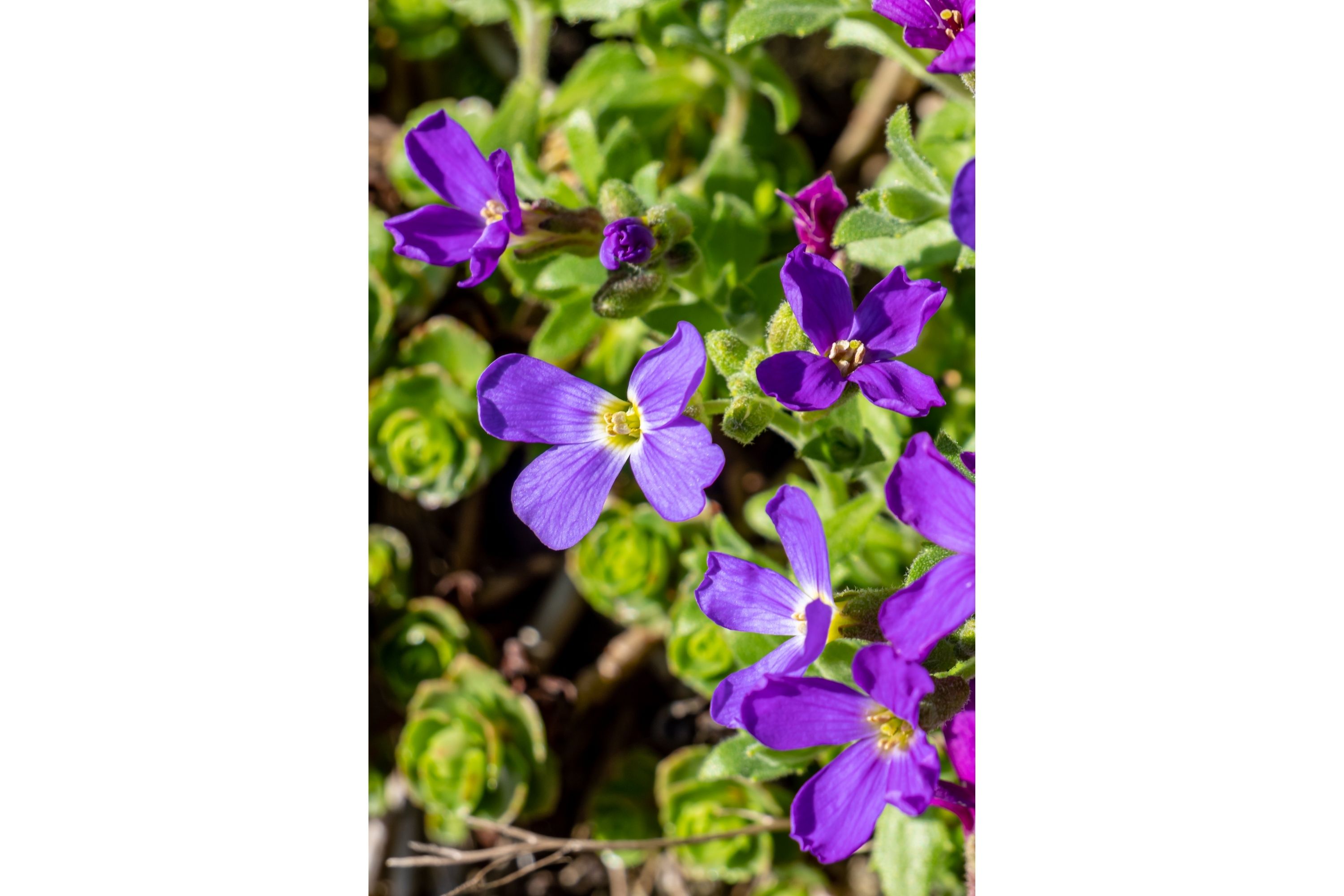Rock cress
(Aubrieta deltoidea)

Description
Aubrieta deltoidea, commonly known as rock cress or purple rock cress, is a perennial flowering plant belonging to the Brassicaceae family. This low-growing plant is native to the rocky and mountainous regions of southern Europe, including the Balkans, Greece, and Turkey. Aubrieta deltoidea is a popular garden plant, known for its striking, violet-blue flowers that bloom in the spring. Description Aubrieta deltoidea is a low-growing, mat-forming plant that grows to a height of about 10-15 cm and spreads to a width of 30-60 cm. The leaves are small, simple, and lance-shaped, measuring about 2-4 cm long and 0.5-1 cm wide. The leaves are hairy, giving them a slightly grayish-green appearance. The stems are woody and branching, and they grow close to the ground. The flowers of Aubrieta deltoidea are the plant's most attractive feature. The flowers bloom in spring, usually in April and May, and are clustered in dense clusters at the tips of the stems. The flowers are four-petaled, with a diameter of about 2 cm. The color of the flowers can range from pale pink to deep violet-blue, and they have a sweet, honey-like fragrance. Cultivation Aubrieta deltoidea is a relatively easy plant to grow and maintain, making it a popular choice for rock gardens, borders, and container planting. It prefers well-drained soil that is slightly acidic to neutral and full sun to partial shade. It can tolerate some drought but needs regular watering during hot and dry periods. Propagation Aubrieta deltoidea can be propagated by seed or by vegetative means, such as division or cuttings. Seeds can be sown directly in the garden in the spring, or indoors in late winter. The seeds should be lightly covered with soil and kept moist until they germinate, which usually takes about 10-14 days. To propagate Aubrieta deltoidea by division, the plant can be divided in the spring or fall. Carefully dig up the plant and separate the clumps into smaller pieces, making sure that each piece has a healthy root system. Replant the divisions in well-drained soil and water thoroughly. To propagate Aubrieta deltoidea by cuttings, take stem cuttings in the summer, when the plant is in full growth. Cut a stem with several leaves and remove the lower leaves, leaving only a few at the top. Dip the cut end of the stem in rooting hormone and plant it in a well-draining potting mix. Keep the soil moist and provide bright, indirect light until the cutting has rooted. Uses Aubrieta deltoidea is primarily grown as an ornamental plant. Its low-growing, mat-forming habit makes it ideal for rock gardens, borders, and groundcovers. The colorful flowers of Aubrieta deltoidea also make it a popular choice for container planting, especially when planted in hanging baskets or cascading over walls. Aubrieta deltoidea is also used in traditional medicine to treat a variety of ailments, including respiratory infections, headaches, and rheumatism. The plant contains several biologically active compounds, including flavonoids, terpenoids, and alkaloids, which are believed to have therapeutic properties. In addition, Aubrieta deltoidea is used in the production of natural dyes. The plant contains a pigment called anthocyanin, which gives the flowers their characteristic violet-blue color. The pigment can be extracted from the flowers and used to dye fabrics and fibers.
Taxonomic tree:







